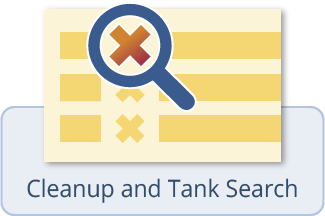Contaminated Site Register & cleanup data
We aim to provide timely information about contaminated site cleanups and opportunities for you to participate in that process. On this page you can find our:
- Contaminated Site Register — Sign up to receive information about cleanups, including public meetings, opportunities to comment, and policy updates.
- Cleanup and Tank Search — Search our database of cleanup and underground storage tank sites.
We publish the Contaminated Site Register about every two weeks. This newsletter has information about new sites, cleanup activities, public meetings, public comment periods, and policy and rule changes.
For more information contact Sarah Kellington (360-280-3167, Sarah.Kellington@ecy.wa.gov).
Cleanup and Tank Search is intended to help you quickly retrieve site information, reports, and data. You can search for a specific site or find all the sites that meet certain criteria, like all the sites in a county or with a particular contaminant. You can also share your results and export them to excel, csv, json, and xml formats.
Cleanup site information
All cleanup sites in Washington state provides information on all current and former contaminated sites. Click the site name to visit the cleanup site webpage, or download the Site Details Report or available site documents directly from the search results page. You can filter by county, contaminant, site status, and whether or not the site is in the Voluntary Cleanup Program or has institutional controls.
There are also pre-filtered subsets of the statewide list available:
-
Contaminated Sites List: All sites awaiting or undergoing investigation or cleanup.
-
No Further Action Sites List: All sites where either Ecology or the Pollution Liability Insurance Agency (PLIA) has determined no further cleanup action is necessary.
For more information on environmental covenants, brownfields, and leaking underground storage tanks, use these specialized lists:
-
Brownfields Sites: Brownfields are properties that are abandoned or underused because they may be contaminated. This list shows sites that have received public brownfields funding, and the amount of funding received.
-
Environmental Covenants Registry: Some sites have 'institutional controls' that restrict use of the property to protect people from exposure to contamination or maintain the integrity of the cleanup. For example, a covenant might prohibit drilling a well or using the property for homes. You can filter this list by type of restriction and legal mechanism.
-
Leaking Underground Storage Tanks List: Information on underground storage tank (UST) facilities that have required cleanup.
Underground storage tank information
The Regulated USTs list provides information about active and closed Underground Storage Tanks. You can search by ID, tag number, or site name, and filter by tank status, stored substance, or county. Each result includes a link to the UST System Summary Report.
Voluntary Cleanup Program (VCP) wait lists
The Voluntary Cleanup Program provides technical assistance to people cleaning up sites independently. In some regions there are waitlists due to Ecology staff capacity.
-
VCP Wait List (Existing): This waitlist is for sites that have already been working with VCP and are waiting for a new cleanup project manager.
-
VCP Wait List (New): This waitlist is for new applicants to the VCP who have not yet been assigned a cleanup project manager.


